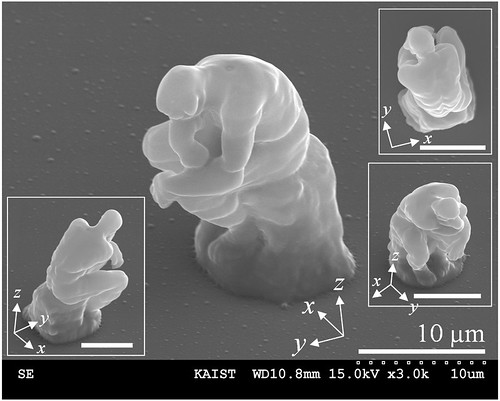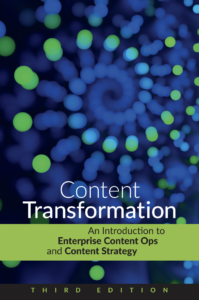Curation analytics take a step forward
My 2011 predictions post included a brief mention of curation analytics. This week, we have news from MindTouch that supports my thought that accountability in technical communication will increase.
 MindTouch has announced support for “popular desktop authoring tools including Adobe FrameMaker, Adobe RoboHelp, XMetaL, Microsoft Word and MadCap Flare as well as several other popular editing tools that produce compiled HTML help (CHM) files.”
MindTouch has announced support for “popular desktop authoring tools including Adobe FrameMaker, Adobe RoboHelp, XMetaL, Microsoft Word and MadCap Flare as well as several other popular editing tools that produce compiled HTML help (CHM) files.”
Upon further review, you will discover that this support is actually a way to convert CHM files into MindTouch.
This is a sort of fascinating development that raises far more questions than it answers. For starters, why did MindTouch choose to support CHM files? I can only speculate that it is the following:
- As a compiled format, CHM files are relatively self-contained and therefore easy (easier?) to convert.
- The CHM format is static and no longer being developed, so it’s a good bet for a converter.
- The various authoring tools all produce the same CHM, which makes it easier to create a multipurpose converter. The alternative would have been to create a converter for RoboHelp projects, another one for Flare projects, and yet another for FrameMaker books.
- Perhaps most importantly, many, many people who are creating CHM files are not particular happy about them and are looking for a way to produce something more interesting and/or interactive.
So MindTouch is now offering an easy way to get from CHM files into MindTouch. What are the implications of this? And what should your strategy be if you are interested in this?
Let’s assume that you like the curation and the other features you would get from a MindTouch-driven web site. There a couple of ways to implement this.
Use MindTouch as a generated format
This approach is probably the path of least resistance in the short term. You could keep your current toolset (whatever it may be), generate CHM files as usual, and then import the CHM file into MindTouch. When you make updates in your source files, you republish and overwrite the generated content.
This approach has some limitations. In particular, since MindTouch is generally intended to open up commenting and even editing to the user community, it seems unfortunate to throw out that information. This brings us to the second option…
Round-trip your content between your authoring tool and MindTouch
Round-tripping would require you to publish to MindTouch, scrape the updates, and then make those updates in your authoring tool. Manually.
Ugh.
Have I mentioned that I really despise the word “manually” and its cousin, the phrase “by hand”??
This could be a reasonable stopgap solution, but if you want lots of comments and user contributions, then you probably need to take a look at the third option…
Shift your source content to MindTouch
There’s no mention of this anywhere in the press release, but a CHM-to-MindTouch converter opens up the obvious possibility that you could import your content into MindTouch and then simply carry on with authoring in MindTouch.
Finally, there is the possibility of a hybrid approach where some information lives in MindTouch and some doesn’t.
I do have a couple of suggestions for the MindTouch team:
- Create a DITA Open Toolkit plugin to publish from DITA directly to MindTouch. Consider contributing that plugin to the community. (That is, make it open source.) Given MindTouch’s open-source roots, this shouldn’t be much of a stretch.
- Figure out the round-tripping issue. Ideally, I’d like to see an approach where the information layer can be maintained in XML/DITA (for my clients; YMMV) and the curation layer is separate.
This leaves us with today’s critical question:
Is the MindTouch curation layer sufficiently compelling to pry technical communicators out of their current tools?
I don’t know the answer to that question, but I find myself thinking of various military metaphors, like “Trojan horse” and “beachhead.” The curation analytics in MindTouch are potentially disruptive. Your emotional attachment to your favorite authoring tool may not survive your management’s discovery that you cannot provide meaningful metrics on how the information is being used. (Note: If you are publishing to HTML and using web analytics, good for you. My experience indicates that you are part of a tiny minority in technical communication.)
Disclosure: I spoke with Aaron Fulkerson, MindTouch CEO, to get some background information. Aaron has North Carolina ties, albeit to the Wrong School.



Aaron Fulkerson
Thanks for the write up. It is written superbly, which is to say as though it were created on the desk of a UNC-Chapel Hill graduate.
You make a great point about round-trip. At MindTouch we’re not trying to replace your authoring environment. Rather we think of MindTouch as a publishing endpoint. A kind of social publishing endpoint that our customers consistently quickly realize to be their most valuable endpoint.
The most complicated round-trip is from DITA to MindTouch. How does one achieve this? Well, we have many customers using DITA or XML. Again with this publishing pipeline MindTouch provides a valuable publishing endpoint. These customers will sometimes allow SMEs and customer MVPs to co-author the official content then flag the content and the best is manually round-tripped. Most of these customers though will allow SMEs and MVPs to create new content or edit just a subset of the content.
We’ll publish a more thorough response to this thoughtful post at http://mindtouch.com/blog later this week. Again, thanks for your analysis.
Sarah O'Keefe
@Aaron: My apologies…we don’t moderate comments, but this one landed in the spam for some reason and I had to resurrect it. Must have been the mention of You-Know-Where…we’ll look forward to your response.